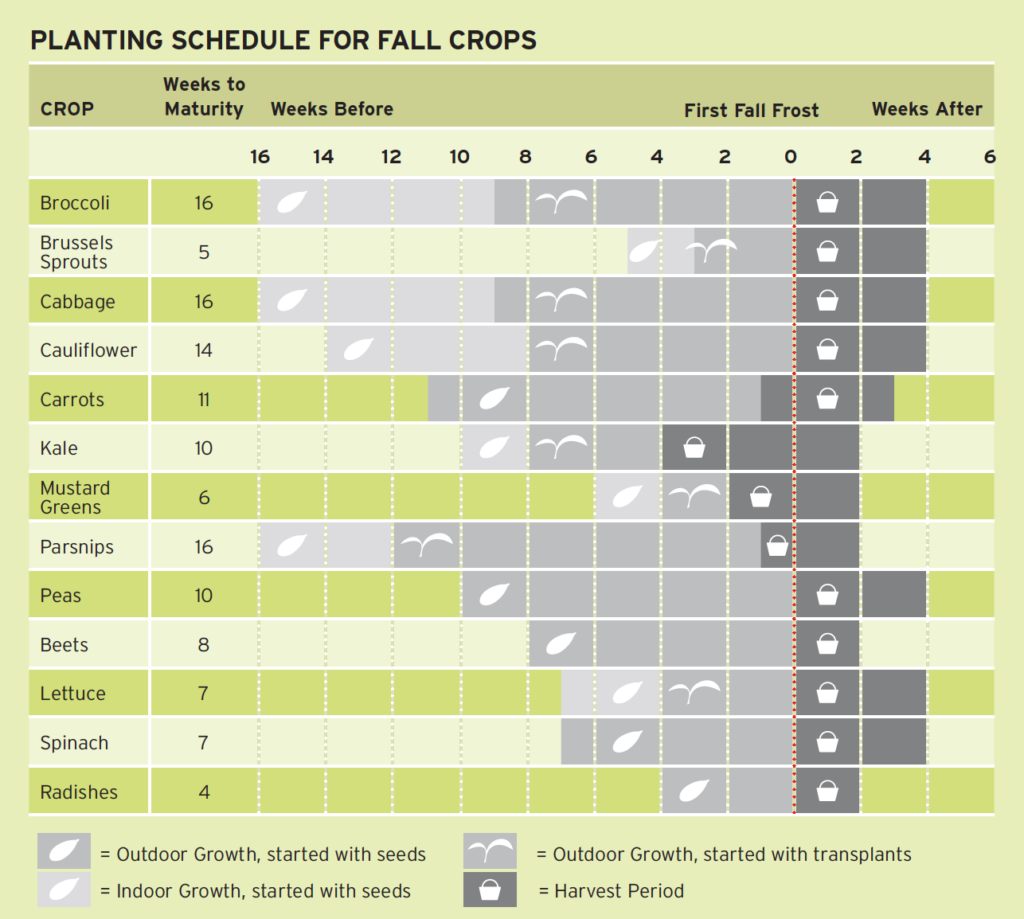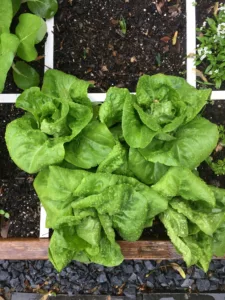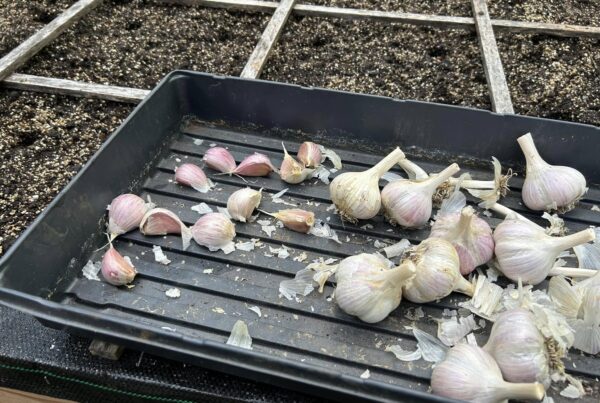We’re getting to the end of the warm season for Square Foot Gardening in the Northern Hemisphere — and even if you live in a warm, mild climate, your summer vegetable garden will soon be showing signs of fatigue. Let’s take a look at how to transition your squares from warm to cool season veggies so your Square Foot Garden doesn’t miss a beat (or is that “beet?”) this fall!
REMEMBER YOUR FROST DATES!
Remember back to the spring when you needed to know your area’s last average frost date before you planted your warm season veggies? Now you need to know your first average frost date before you plant your cool season veggies and seeds. Hop over to The Old Farmer’s Almanac, put your zip code in the search bar, and you’ll see your area’s average frost dates listed. You want to know your first average frost date because this will help you understand when to start your cool season veggie seeds, and when to anticipate needing to cover up any tender plants you have in your garden.
This chart will show you when to plant transplants or start seeds according to the first frost date for your area:

THE LIST: WARM SEASON VS. COOL SEASON VEGETABLES
If you’ve read our blog post about Warm Season Veggies, you know that warm season veggies like tomatoes, peppers, and cucumbers are typically planted after the last frost date sometime in the spring. They require warmer soil and air temperatures to germinate and grow.
Your cool season veggies are the opposite — these are the veggies like broccoli, cauliflower, lettuces, and radishes that not only love crisper temperatures, but require them to grow and produce their crop. There’s a distinction between cool season veggies and winter hardy veggies — many cool season veggies will accept some frosty temps but will not survive very cold weather or hard freezing, while winter hardy veggies like carrots and cauliflower can survive temps into the teens. Take a look on your seed packet to know the preferences for each of the plants you’re planning to add to your fall/winter Square Foot Garden.
Cool season veggies include lettuce, greens (arugula, mustard greens, collards, spinach, kale, etc.), carrots, broccoli, cauliflower, beets, carrots, onions, peas, fennel, cabbage, potatoes, radishes, and celery.

WHEN IS IT TIME TO REMOVE WARM SEASON VEGETABLES?
Just like with your cool season veggies in the spring, you’ll want to be familiar with your warm season vegetables so you know when it’s time to remove them and replant your squares. Depending upon where you live, you may start to notice a decline in your warm season vegetables in August or September. Look for these signs:
-
- The plant looks tired and leaves are crispy
- Fruit and veggie production has slowed down or stopped altogether
- The plant looks like it’s dying
WHEN SHOULD YOU PLANT COOL SEASON VEGETABLES?
This depends upon where you live. Cool season veggies are typically planted in late summer to early fall for harvest during the fall, winter, and possibly into early spring. Very mild areas can continue planting all through the winter as long as you don’t plant too closely to your first average frost date — and very cold areas, like Alaska, often plant in May and June for a (cool) summer harvest. Find the best times for your area by consulting your county extension office or a trusted local garden center.
To replant your squares, follow the same process you did for replanting in the spring:
-
- Remove the spent plant — stems, roots, and any leftover debris like old leaves.
- Add one trowel of blended compost and thoroughly mix it in.
- Plant the seeds or transplants for the next crop.
Remember, you can replant only the squares that need it! If your eggplant or tomato plant has finally said adios, simply remove the plant from that one square and follow the steps above — and leave the surrounding or neighboring squares alone if they are still producing their warm season crops.
Nothing could be simpler! Square Foot Gardening is all about keeping the process simple to conserve resources like water, money, and labor, while increasing your crops and your enjoyment of your garden.



